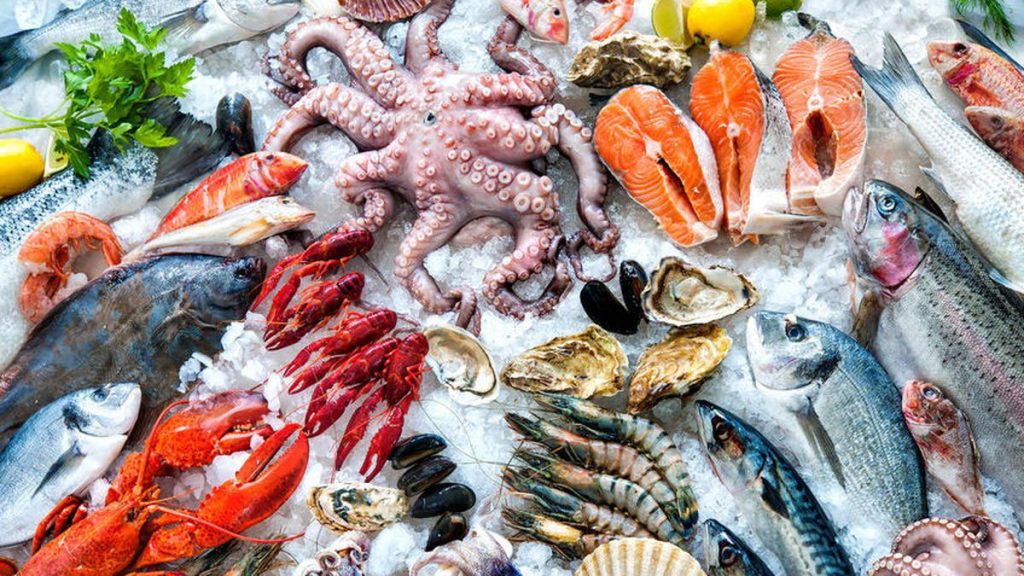Interesting Facts Behind the Most Popular Seafood
Seafood has long been a favorite across many cultures and countries. In this article, we will discuss the interesting facts behind the most popular seafood. From mouth-watering deliciousness to environmental and health impacts, seafood offers both positive and negative sides that are worth exploring further.
Popularity of Seafood in Different Countries
Interesting facts behind the most popular seafood can be seen from the variety of seafood dishes that are spread throughout the world. In Japan, sushi and sashimi made from raw fish are very popular. In Indonesia, dishes such as Padang sauce crab, grilled fish, and fried shrimp are the favorites in many restaurants. Meanwhile, in the United States, lobster and shellfish are luxurious dishes that are often present at formal parties. It is undeniable that the taste for seafood continues to grow along with globalization and the exchange of culinary cultures.
Nutritional Value and Health Benefits
The next interesting fact behind the most popular seafood is its high nutritional content. Fish and shellfish are rich in high-quality protein, omega-3 fatty acids, vitamin D, and essential minerals such as iodine and selenium. Omega-3 has been shown to support heart health, brain function, and reduce the risk of inflammation. Regular consumption of seafood, especially fatty fish such as salmon and tuna, can provide long-term benefits for body health.
Contamination Threats and Health Risks
Although rich in nutrients, interesting facts behind the most popular seafood also have a dark side. Some types of fish contain high levels of mercury, such as shark, swordfish, and king mackerel. Long-term exposure to mercury can disrupt the nervous system and fetal growth for pregnant women. In addition, raw seafood such as oysters and mussels can contain harmful bacteria or viruses that cause food poisoning. Therefore, it is important to choose a trusted source of seafood and process it properly.
The Role of the Fishing Industry and Marine Exploitation
One interesting fact behind the most popular seafood is our dependence on the global fishing industry. High demand for seafood has driven overfishing practices, which threaten fish populations and marine ecosystems. Some species are even threatened with extinction due to overexploitation. In addition, environmentally unfriendly fishing methods such as the use of trawl nets or fish bombs can permanently damage coral reefs and other marine habitats. This is the negative side that is often overlooked in seafood consumption.
Creativity in Processing Seafood
Interesting facts behind the most popular seafood cannot be separated from creativity in its processing. From traditional recipes to modern techniques such as sous vide, seafood continues to be explored by chefs to create unique culinary experiences. Even in the world of digital entertainment, seafood inspiration appears in various forms, such as the theme of the game Hacksaw Gaming Slot which highlights elements of the sea and underwater adventures. This shows how seafood has become part of a broad popular culture.
Contribution to the Local and Global Economy
Seafood plays an important role in the economy, both locally and globally. An interesting fact behind the most popular seafood is the role of small fishermen who are the backbone of the seafood supply in many developing countries. This industry also opens up jobs in the fields of processing, distribution, and culinary tourism. On the other hand, dependence on seafood exports can make producing countries vulnerable to fluctuations in global market prices. Therefore, fair and sustainable policies are needed to maintain the balance between demand and availability of marine resources.
Seafood and Modern Lifestyle

Urban lifestyles and increasing awareness of healthy eating have made seafood increasingly popular. Interesting facts behind the most popular seafood also reflect the shift in consumer preferences towards protein sources that are considered “cleaner” than red meat. Many fast food restaurants now provide fish-based menus, and processed seafood products such as fish nuggets or canned sardines are a practical choice for modern society. However, this practicality also poses new challenges, such as the use of preservatives and the loss of the natural taste of fresh seafood.
The Role of Technology in Production and Conservation
Interesting facts behind the most popular seafood cannot be separated from technological advances. Fish farming (aquaculture) is a solution to reduce pressure on wild fish stocks. Satellite monitoring technology and supply chain traceability systems are now used to ensure that the seafood consumed comes from sustainable sources. However, technology also has a negative side, such as pollution from intensive shrimp farming or the use of antibiotics in aquaculture that can pollute the environment.
Consumer Concern for Food Origin
Increasing consumer awareness of sustainability is one of the interesting facts behind the most popular seafood. Now, many people are starting to question the origin of the fish they consume, whether it comes from wild catches or responsibly farmed fish. Labels such as “MSC Certified” or “Organic Seafood” are important indicators in making purchasing decisions. On the other hand, not all consumers have access to information or sustainable products, especially in remote areas or developing countries.
Traditions and Cultural Heritage in Seafood
It is undeniable that seafood also reflects the cultural identity of a nation. Interesting facts behind the most popular seafood include the traditional values and rituals inherent in its presentation. In some coastal areas, seafood is served in traditional ceremonies or religious celebrations. For example, the tradition of “eating grilled fish together” in eastern Indonesia or the oyster festival in Europe. This cultural heritage is an important part of maintaining local values amidst the flow of modernization.
Read Also: Simple home business suitable for all groups
Challenges in Maintaining Sustainability
The interesting facts behind the most popular seafood also bring us a big challenge to maintain its sustainability. Climate change is causing sea temperatures to rise, which affects fish migration and populations. Ocean pollution from plastic, industrial waste, and oil spills are worsening the situation. Conservation efforts and strict regulations are urgently needed so that future generations can continue to enjoy the deliciousness of seafood without damaging the balance of nature. Education and public campaigns must also be encouraged to raise public awareness about the importance of responsible consumption.
By understanding the interesting facts behind the most popular seafood from various perspectives, we can become wiser consumers, while also playing a role in maintaining the sustainability of this valuable marine ecosystem.


